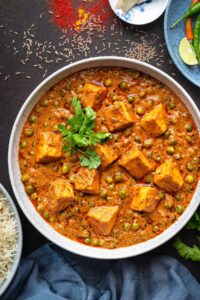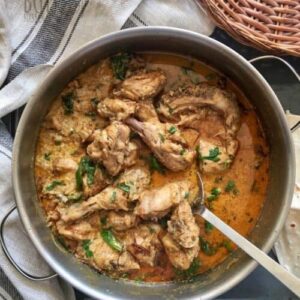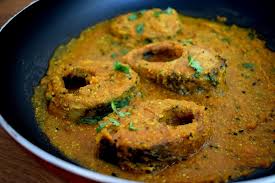Hotel Management Class Notes 15
Continental Food and Oriental Food
Different cuisines prepared in different regions across the world have stories to tell about its place, tradition and culture. From Chinese to Continental, Lebanese to Japanese and Indian, all of them have a taste of their own. We all love to savour delicacies from around the world, especially since they are easily available in India now. However, there’s always been a confusion between continental and oriental food, generally mistaken as one kind. Basic Definition is , “the major difference between these two kinds of food lies in the regions they are prepared in. Continental food is made in Europe and Oriental food covers the Southeast Asian region.”
Read on as we give you a lowdown on the difference between continental food and oriental food.
What is Continental Food?
“Continental food is something that is prepared in the continent of Europe. Essentially you won’t see Chinese and Indian cuisines in a Continental platter, just Mediterranean and French food.” Continental food refers to the delicacies consumed in European countries. The French, Italian and Spanish parts of Europe, all do ‘continental’ dishes which focus more on olive oil, wine, garlic and various herbs and spices.

“Oriental food belongs to the Southeast Asian countries which include Chinese, Thai, Korean, Japanese, etc.” The Oriental part of Asia covers a big chunk of Eastern Asia encompassing a wide range of culinary traditions. The Orient can stretch up to Philippines, Korean, Thailand, Indonesia, Mongolia, Japan, Vietnam and regions covering most of China. Oriental food generally uses dried ingredients like dry apricot and dry plums, while continental food does not use any of it.
Unlike oriental food, continental food has lesser amount of vegetables, but nowadays vegetables have become common in both the cuisines. Foods like baby corns, sundried tomatoes and lotus roots were never used in Continental dishes but now chefs don’t hesitate to use them while cooking.

Major differences between Oriental & Continental
By Definition: Oriental food is Asian style cooking and Continental food is European style cooking.
Spices and Herbs Used:Oriental food uses lesser amounts of spices and herbs, while Continental food uses generous amount including rosemary, thyme, et al.
Staple:Oriental food uses a lot of noodles and rice, while meat and steaks are included in continental dishes
Sauces: Sauces are used as a part of the dish in the case of oriental food, while in continental food they are used as seasoning or condiments.
Some Examples: Oriental food includes Peking Duck, Cantonese, Schezwan Chicken, Gka Prow Gai, Baked Thai Chicken and Sushi platter among others and Continental food includes pastas, steaks, pies, and other bakes.
INDIAN CUISINE
Indian cuisine is lauded around the world for its complex flavors, diverse spices, and aroma. Traveling to India is a dream of many and much of the experience is trying local food from chicken tikka masala to homemade samosas. Traditional recipes have been handed down through the generations, which may explain why locals have got the use of spice down to an art form.
Chicken Makhani (Butter Chicken)

Butter chicken is mouth-watering, tender chicken, cooked in a spiced tomato sauce. It’s traditionally cooked in a tandoor (a cylindrical clay or metal oven), but may be grilled, roasted or pan-fried in less authentic preparations.
Always make the gravy by first cooking fresh tomato, garlic, and cardamom down into a bright red pulp. This pulp is then pureed after cooling. Then, the chef adds butter, various spices, and Khoa (dried whole milk).
Vegetarian Indian Dish Option:
Though a lot of traditional Indian food uses meat, there are plenty of Indian vegetarian dishes. You can make your own butter chicken vegetarian by substituting chicken for tofu.
You can mimic the taste and texture of chicken by tossing tofu pieces with corn starch. Then, bake the pieces in the oven and voila! You have slightly crispy, delicious, buttery vegetarian “chicken”.
- Samosas (Deep-Fried Potato/Veggie Dumpling)

Samosas are a very popular traditional Indian Dish. Probably because samosas are a tasty, fried, or baked pastry with savory fillings.
Spiced potatoes, onions, peas, and lentils fill traditional samosas. But sometimes, they are made with ground lamb, ground beef or ground chicken.
Good news for all of you Indian food lovers and solely plant-based eaters. Indian samosas are usually vegan! That means the pastry is free of eggs and dairy products.
Samosas are often accompanied by a sweet mint sauce or chutney (scroll down for Chef Marie’s sweet and savory chutney recipes!). These puffy treats are common street food. You can find tourists and Indian natives alike eating them as a midday snack or a side to the main dish.
3. Aloo Gobi (Potato and Cauliflower)

Aloo Gobi is a dry, vegan Indian dish, made with potatoes (aloo), cauliflower (gobi), and Indian spices. It has a warm, yellow-orange color, because it uses a staple in Indian dishes: turmeric.
Aloo Gobi occasionally contains kalonji and curry leaves as well. Other common ingredients include garlic, ginger, onion, coriander stalks, tomato, peas, and cumin. Throw it all together to roast in the oven and you’ve got one of the most popular dishes ordered in Indian restaurants.
- Matar Paneer (Peas and Cooked Cottage Cheese)

Here’s another for the “Indian vegetarian dishes” category!
Matar paneer comes from regions of northern India. It’s made up of a yummy tomato sauce over paneer (farmer’s cheese) and peas, and spiced with garam masala.
Like many Indian dishes, matar paneer is best when paired with a cooling side dish, like cream or bread.
Depending on the region, it’s likely to be served with rice, naan, paratha, poori, or roti.
Enjoy dipping your bread (or Naan) into the tomato gravy after you eat up the cheese and veggies.
Whether you choose naan, yogurt, aloo, or cream, to pair with this dish, your taste buds will thank you!
6. Rogan Josh (Curried Meat)

Rogan josh is a staple of Kashmiri (region in northern India) cuisine. It’s one of the main dishes of a Wazwan: a Kashmiri multi-course meal.
Rogan Josh consists of braised lamb chunks cooked with gravy. Generally, Indian chefs make this gravy from browned onions, yogurt, garlic, ginger, and aromatic spices.
Known for its brilliant red color, a classic rogan josh uses liberal amounts of dried Kashmiri chilies.
Make sure to de-seed these babies before you use them unless you’re a glutton for punishment. Though they are less hot when de-seeded, Kashmiri chilies tend to be milder than cayenne chilies. You will find cayenne chilies in many other Indian dishes.
Most of the spiciness from a rogan josh comes from the fragrance of the dish rather than the heat. It’s a yummy treat that is mild enough for Western palates, but intense enough for spice-lovers. If you love lamb, this dish is a must-try.
Tandoori Chicken

Indian food is full of flavor and zest and Tandoori chicken is one of the best examples. The yogurt-marinated chicken is mouthwatering and juicy, but it’s one of the Indian recipes that you’ll need to prepare for if you want to get it right.
Traditionally cooked in a clay oven, for us everyday chefs, a regular oven or even a grill will suffice. But before we get to this stage, it’s important to marinate the chicken in the refrigerator for at least six hours. The chicken is marinated with yogurt and spices like turmeric, coriander, garlic, and lime juice, among others. Once the marinating is done, fire up the oven and let the flavors continue to work their magic.
Chicken Tikka Masala

In order to successfully make your way around an Indian menu, it pays to know a few of the commo0n terms. Masala is the Hindi term for spice blend and Tikka means small chunks. Put them together and you have one of the best traditional Indian foods.
Popular among locals and travelers alike, chicken tikka masala is another great choice for those becoming acquainted with Indian cuisine. It may be immensely tasty, yet the curry is mild. The chicken is first marinated in garam masala. This spice blend includes yogurt, coriander, cumin, cloves, and black pepper. Later, the chicken is roasted over charcoal before being added to a creamy gravy of paprika, red chili, and tomatoes. Make chicken tikka masala at home with this recipe
Korma :-

Another major staple in North Indian cuisine is Korma. As one of the Indian dishes that has worldwide acclaim, it’s a common choice for travelers or those cooking at home. Korma comprises braised meat, most likely to be beef or chicken, which is then slow-cooked in a thick, yet mild curry sauce. The sauce is made up of cream, coconut milk, or yogurt with the addition of several spices. Often the delicious garam masala. Here, the meat is switched out for a different protein with the addition of several vegetables and almonds.
Fish Curry

Now that you know your naans from your dosas, it’s time to explore a popular Indian curry. For geographical reasons, fish curry is most common in South India and features fish marinated in a tangy tamarind sauce. The fish is then added to curry to create a flavorful Indian meal. Rather than try the fish curry as it’s presented, add some basmati rice. Better yet, grab a side of dosa or naan to soak up all the goodness. If you want to make the curry yourself, firm whitefish will be perfect for the job. Options include halibut and cod.



